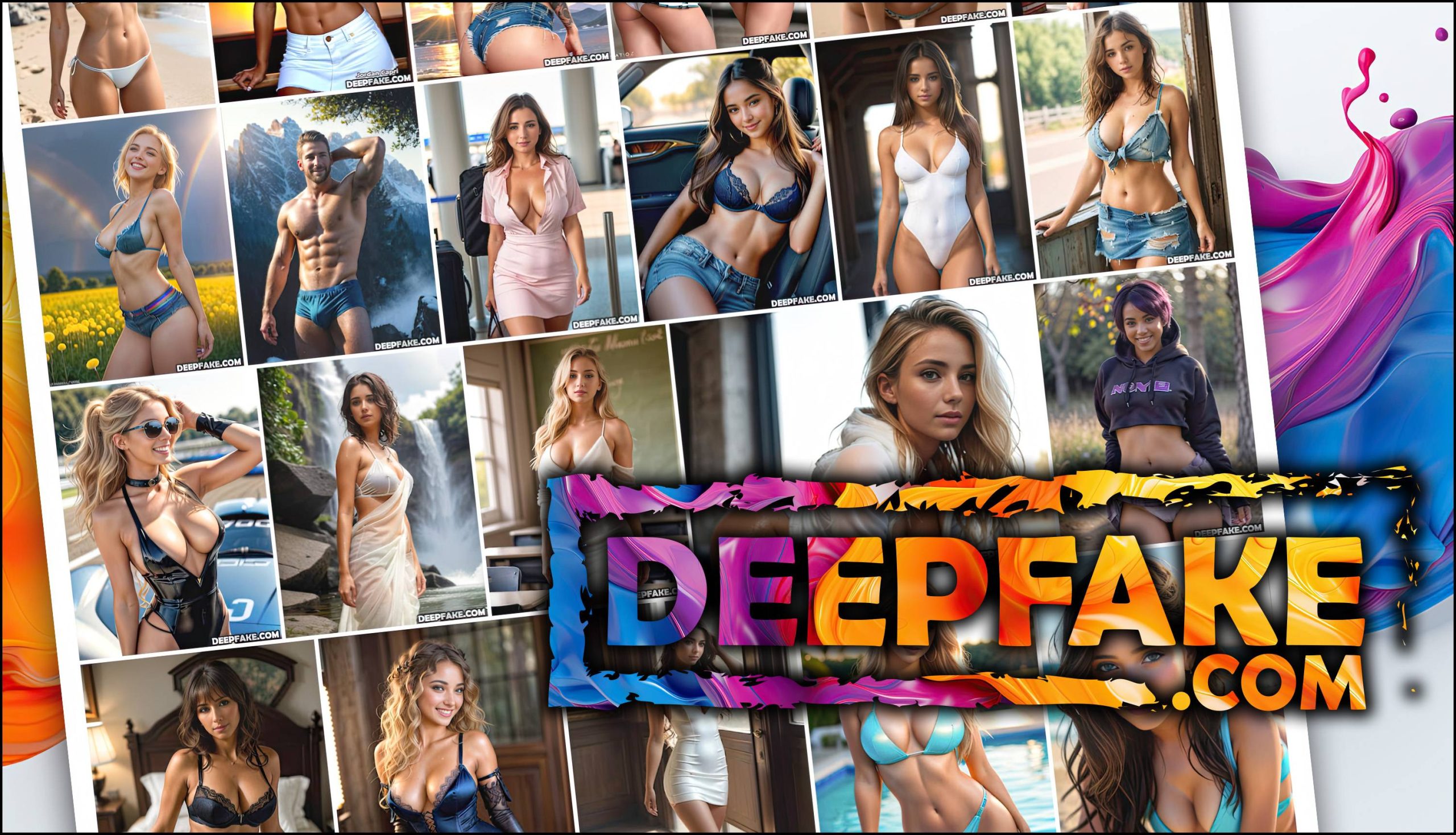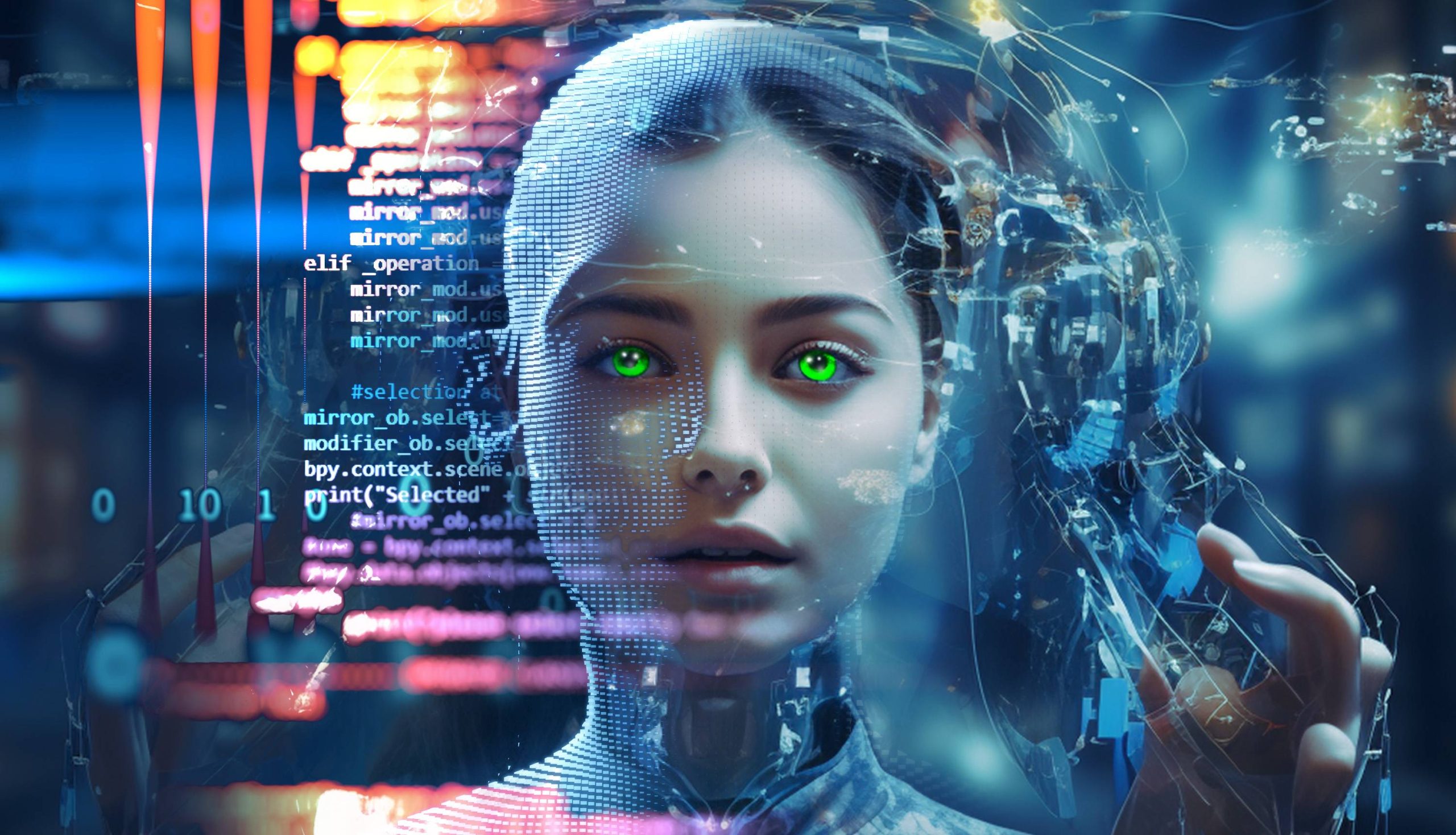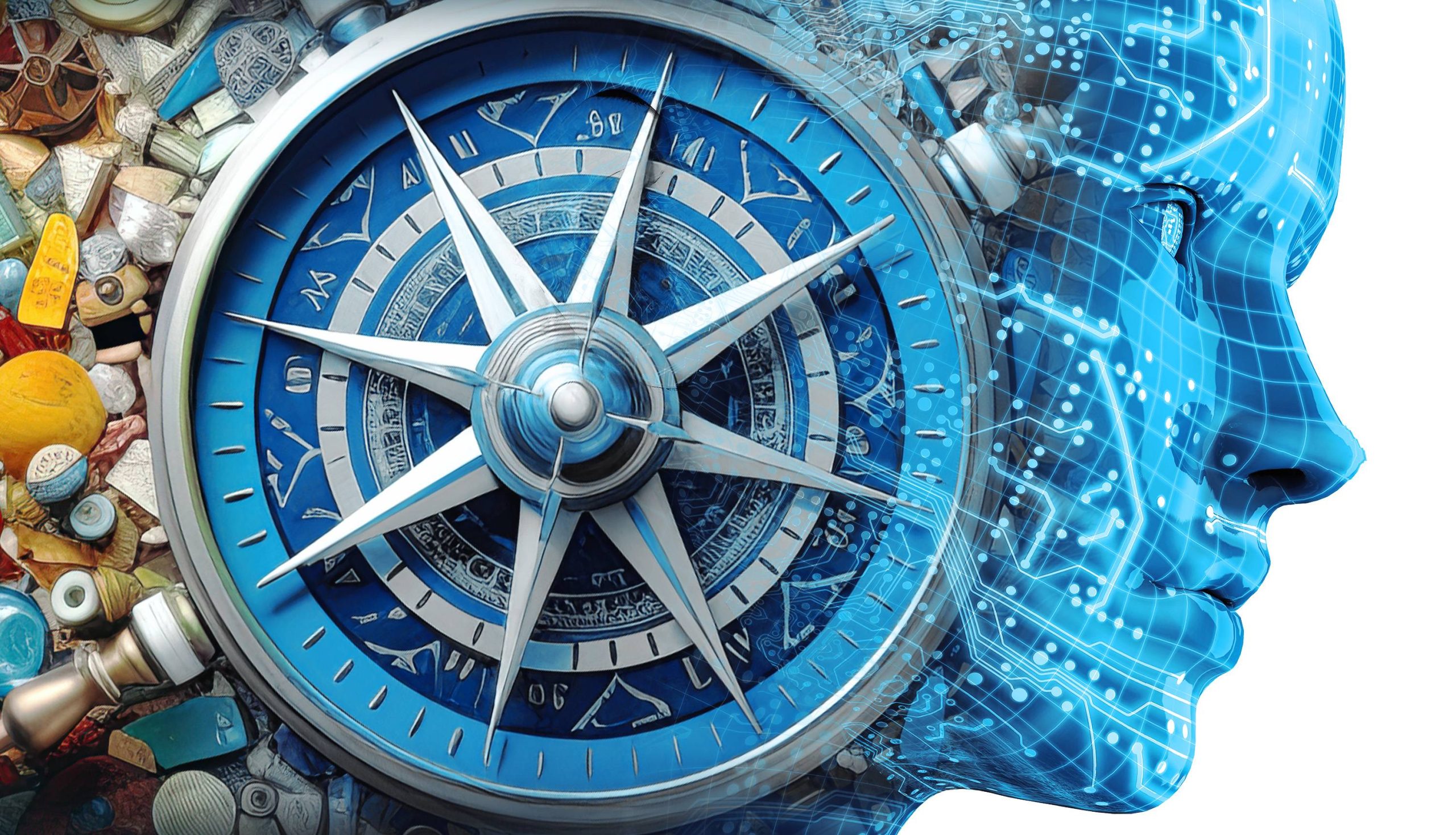
Steve Lightspeed is the founder and CEO of Lightspeed Media Corp and an AVN Porn Hall of Fame inductee. In 1999, Steve created Lightspeedcash.com, which grew from a part-time hobby into one of the web’s longest running and most successful sologirl paysite networks and affiliate programs. Steve currently runs Lightspeed AI, a technology and services company focused on bringing the amazing capabilities of AI to the adult industry and its content creators’ community. He has spoken at dozens of adult industry conferences and is known for his honest, down-to-earth, and fun approach to the business of porn.
Steve just launched the first 100% AI site in the industry with Deepfake.com, which works basically like a creator’s network with 450,000 models ready to send custom sexy and nude pics on demand. The site is free to try and offers a pro version with additional image generation options and advanced usability features. Deepfake.com has an affiliate program paying 20% of lifetime revenue, and a white label version will be available soon. Steve can be reached at Lightspeed-AI.com.
Steve, can you tell us a little bit about your background and what led you to start your own business in the adult industry?
Sure. I started out as a computer programmer in Seattle, and in the late nineties we saw a guy on TV talking about how he made millions of dollars by putting pictures of naked college girls online. And my wife just looked at me and said, wow, if he could do that, why couldn’t you do that? And I thought, you’re the greatest wife of all time! I can’t believe you thought of this, but she said I could do it. So yeah, let’s try it and see what happens. So, I hired a couple of models and took some pictures. I totally didn’t know what I was doing. I’ve never touched a camera in my life.
It was just during that time in the late nineties when anybody could put up a site and make money with it. So, I literally just started half-assed, and lucked out, timing wise. I kind of floundered around for the first couple of years until I met Richard and Tanker. I got where I realized that I can’t really do all this myself. There’s a lot to running a website and marketing and photography and doing it all by myself. So, I hired Tanker and Richard. Things just took off. It was crazy. Tanker knew everybody in the industry.
Our affiliate program just blew up overnight. And Richard got the office and all the websites and servers organized and basically un unscrewed all the things that I messed up.
So yeah, it was a perfect team. We just started killing it. We hired our first good model in 2000, our first superstar, Tawnee Stone. A lot of people have heard that name She was literally a phenomenon. She was one of the first regular girl next door types that had her own little website.
We couldn’t believe how popular her site became. We went full bore, spent upwards of a million dollars on marketing for one girl. And it really paid off. We got to travel around the world and meet everybody and become part of the industry. I think we were one of the first that really tried to do non porn stars or non-swinger sites. Everybody else was doing amateur sites or, or fan sites for existing models. But we were the first ones to go out and hire a waitress and give her a website and say that she’s famous, just to see what happens.
It just really worked out. We found out at the time there were a lot of girls who wanted to do this and just didn’t have the resources. Nobody back then knew how to build a website or put a server together. It was a perfect match. Tawnee and I argued a bit about who made who, but I couldn’t have done it without her, and she couldn’t have done it without me. So it was a great partnership. We worked together for seven years and built LightspeedCash into what it became. We opened 35 sites after her. It just became a real thing and the money just kept coming in.
And we got big into the marketing and the affiliate side of it. We really liked to treat our affiliates as good as we could. We would spoil them rotten at every opportunity. I remember we had a party here in Phoenix where we were trying to spend. $60,000 on 20 guys in three days. It was kind of like an episode of Brewster’s Millions. We were just like how can we go blow more money right now? Let’s go do stupid stuff! So we did. We did all kinds of stupid stuff. It was a lot of fun. Everybody got their own presidential suite at the Hilton, everybody got massages and jerseys, we played golf, we did go-kart races. We had a paintball war, and we partied their asses off. It was so much fun.
Can you share the story of your first big break and how it impacted your career?
The Phoenix Forum is where we really got our big break, because the forum was in Phoenix and we are in Phoenix, so CCBill just kind of embraced us and said, all right, you’re doing this show with us. And from that grew our annual Naked Dodgeball Tournament. Dodgeball was actually my little son’s idea. Of course, he didn’t know exactly what we were talking about. But I called him my little consultant.
I said, if you had to entertain a bunch of your friends for an afternoon, what would you do? He’s like, “Dodgeball, Dad! It’s awesome!” So we did that and just kind of took it to the next level.
It was Ron Cadwell from CCBill and Frank and Joanne who really took great care of us. There were like, we know you don’t know what you’re doing. But we’re going to show you how. I remember them telling me “We’re going to blow you so sky high at this show.” And they did. Everybody thought I owned that show.
What do you think contributed to your rise in the industry?
One of the things that we did differently was, at the time, everybody was all about $35 payouts and how much money can we spend on one guy. They were all chasing the whales. And we were like, alright, let’s, let’s not exclude everybody else and worry about just one guy. I’d rather be supported by a bunch of small bricks than one thick rope. So we focused on the smaller affiliates. I wanted 10,000 people to send us one join a day. And that’s pretty much what we got to.
It was a very smart strategy until things changed in about 2008. A lot of the small companies just got squeezed out because of market forces. It was a perfect storm. Kind of took the whole industry by surprise, and we weren’t really organized to the point that we could do anything about it.
Everybody was friendly but not involved with each other. Back then if we would’ve realized what the dangers really looked like, we, we might’ve fought a little harder, but hindsight’s 2020. I was told I should get over it. And I am over it now. I am totally onto the next thing. I’m ready to release my AI site. That’s been my 100% focus for the last several years. I knew this day was coming.
So how do you view the industry now compared to when you started?
It’s definitely a lot more mature now. When I started, any moron with an idea could launch a site and make money. I don’t think that’s true anymore. Also back when I started, the models kind of took whatever they could get. They didn’t have a lot of power, versus now where they have ALL the power. The models have really taken their rightful place in the industry as the ones in charge, between cam networks and onlyfans and the clip sites, the models pretty much set their own pace now. They don’t have to deal with producers and directors and all the old school stuff that used to happen.
But the whole industry is still about trust. If I do a traffic trade, I want to know the person behind it. I want to have met them personally because I don’t want to do business with someone that I don’t trust. I like to go out with people and make an ass out of myself. That’s my way of letting people sort themselves out. I go, all right, if you don’t like me, you just saved me a shitton of time. Let yourself out. See ya! I don’t trust people who can’t relax or have fun.
So what changes in the industry led to your early retirement, and how did you navigate that transition?
Oh, well, I mean, clearly anybody that reads my posts knows that I am not a fan of tube sites. I feel like we just got rolled over. I launched a few sites. I tried a few different ideas, some of the best work I’ve ever done, and I just could not get traction because all anyone wanted to talk about was tube sites. So I put all the Lightspeed sites on autopilot. They never actually went down. They’ve been getting new sales every day for 20 years. I just kind of decided since I don’t need the money right now, I’m just going to kick back and enjoy my family and do some other stuff.
I volunteered. I worked with handicapped kids for a couple years. Turned out to be really rewarding, I’m glad I did it. I took some mainstream jobs to learn more about AI. Everything I’ve been doing for the last six years or more has been about AI. It’s been fascinating watching how quickly it’s evolving. But working in mainstream made me realize that I was born for porn. I got fired from multiple jobs for being… me. I, I get it, I’m not everyone’s cup of tea. I have a very raunchy sense of humor. And things have changed. I just found out that I’m old now!
So what motivated you, besides loving porn, to make a comeback in the industry, and how have your goals evolved since your initial success?
Well, I’m back for AI. I have not been as enthusiastic about anything like this since when I got my first computer or when I first went online.
This is the year of AI. Everybody has been impacted already, whether they realize it or not. It’s going to change everything. I haven’t written a line of code or a paragraph in a memo since I found chatGPT. It does everything for me. It wrote most of the deepfake site for me. I said, how do you make a picture with AI? And it went, here you go. I just started following directions. There are now 450,000 girls on the site. ChatGPT named them all and gave them all little biographies. AI is going to change everything. I just can’t even imagine all the possibilities at this point. I think we’re all going to be shocked at how much things change and how quickly.
What do you see as the benefits of AI for models and performers?
I’m sure everybody’s curious about AI and what it can do for models and what it will do to the adult industry in general. I have a unique perspective on it, probably because I’ve been working in it for so long, but I think it’s going to help all of us.
There’s a ton of valuable things that AI can help models with. not the least of which, is privacy. I know so many models who feel like they made a mistake, or years later wish they hadn’t done porn. But if we could have altered your face to where you were just a little bit unrecognizable, you wouldn’t be having all these issues now.
Also, a lot of models go through significant surgeries to maintain their looks as they age. With AI, you won’t need to do that. We’ll take pictures of you from when you looked your best, and that’ll be you, forever. How many models have been forced to retire just because they got older?
Another problem for models right now is there’s only one of them. But what if they could manage 10 versions of themselves where the AI is doing a lot of the work and they’re just overseeing the whole operation? That tells me they would make 10x more money. They could easily manage their own little networks, but still only do the amount of work they’re doing now. It only takes a few hundred images now and the girls wouldn’t even have to really model anymore. You could just use your avatars and make new content from the old content. I tell models, we can simplify your job to just walking out to your mailbox to collect your check from licensing your name and likeness.
Of course, everyone’s like, but what about personal interaction? Yeah. I think that that’s an important thing for a lot of users, but I also know that I’ve been a porn consumer my whole life, and I’ve never once gone on a live cam show or wanted to talk to any of the models.
And let’s talk about what’s REAL. We all know the most popular creators out there already have people chatting for them. They’re not doing their own communications. They’re either going through an onlyfans agency who’s taking care of the chatters, or they’re hiring chatters themselves. The old joke is don’t pull the curtain too far back on the porn industry because eventually you’re going to find an old fat bald guy, or an outsourced Filipino. One poor guy once sent an email to Tawnee Stone and said, “I hope I’m talking to you and not some old, fat, bald, creepy guy.” I wrote him back. “Fuck you. I’m not fat!”
But some models are worried that AI is going to take their jobs. I disagree. The tech is good, but nothing can replace the real thing. AI will only substitute for you when you are ready to retire. We want to work with older models who are at that stage of their career. Many of those are my dear friends from the last 25 years. I think deepfake tech could be a perfect exit strategy for them to retire but continue to cash in their brand for many more years.
What about people who create AI images of women without their consent?
I think that everyone should own the rights to their own names, faces, and voices, and nobody has the right to steal them, let alone turn you into a pornstar without your consent. On Deepfake.com, we only allow AI generation of imaginary people. Every one of those 450,000 avatars is a person who does not exist. The handful of real models on the site are there because they want to be. We are very mindful about using AI legally and ethically.
What is the appeal of AI content for your fans?
The best part of AI content is not even the endless variety, but the ability to create a scene out of your own imagination. It’s about sitting in the director’s chair. The first photoshoot I did with a great model was a fantastic experience. That’s the experience we are selling with AI. No more endless searching the dark corners of the internet for new content! Building your own DreamGirl or DreamGuy is a very addictive thing. Our users can be “Steve Lightspeed for the Day”.
What are the long-term goals for your company regarding the development and implementation of your AI technology in the content industry.
My ultimate goal is to create a 100% indistinguishable model that you can engage with, including directing her to get naked on her bed and do a little cam show. We’re probably not more than 18 months away from being able to do that. There’s already a lot you can do with video. Virtual avatars are already hard to tell that they’re not real. We’re really getting good at it.
I want to become an AI services company. Because I believe that everybody is going to want to implement AI into their business models in various ways. And there’s so many ways to do it right now, and there’s so few people that are really trained or have the experience, especially in the adult industry. I want to become THE AI source for the adult industry. But it is a dangerous game. There’s so much risk, but that’s where I think I have a little bit of an advantage, because I have solid relationships with so many people in the industry. I’ve said from the beginning of this, our industry needs responsible professionals to lead by example, and I intend to be one of them.
Artificial Intelligence: Why Would Employees Trust Versus Second-Guess It?

According to Forbes, 50% of companies plan to invest more in artificial intelligence and integrate it into their daily operations. It is safe to say that AI is not new, and companies are turning to it to replace the traditional processes and systems they have been having for years. In fact, approximately 83% of companies have increased their budget for artificial intelligence since 2019.
Since first coming into place, more organizations have adopted AI with each passing year. They believe that with AI tools at their disposal, they will be able to automate most of their processes and stay ahead of the game.
However, before integrating AI into your company’s day-to-day activities, it is important that you evaluate how your employees would perceive it. Would they trust or second-guess it? In this article, we look at why employees would trust versus second-guess artificial intelligence.
Why Employees Would Trust AI
The following are the reasons why employees would trust artificial intelligence:
1. Saves the Resources of the Company
One of the reasons why employees should trust artificial intelligence is that it saves the resources of the company through automation. AI also helps save money and time, which, in return, improves efficiency.
Companies with chatbots, for instance, are able to save resources, time, and money since these chatbots are able to automatically hold a conversation with several customers simultaneously. That is not all; they are also able to cater to each of their needs.
2. Reduces Employee Turnover
A company that faces a high employee turnover can have its productivity and profits massively affected. Nevertheless, companies can rely on AI to help reduce employee turnover. By taking up crucial tasks, AI can ease the burden on employees, thereby creating a less stressful work environment.
According to studies, employees are likely to carry out their tasks with enthusiasm when working in a stress-free environment. Also, when employees are happy, they are less likely to leave their positions.
3. Improves Customer Satisfaction
An enterprise that wants to enjoy immeasurable success has to put effort into customer satisfaction. That is because when your customers are happy, they will talk positively about you, thereby driving more customers to your business. Companies can use AI tools to enhance customer satisfaction and become more successful.
AI tools assist the support team in providing solutions to the problems customers are facing, thereby helping save time. When customers are assisted in a timely manner, they become impressed and willing to do more business with the company.
4. Increases Returns
It is safe to say that the primary goal of every business is to increase its profits and returns over time. And for companies to achieve this, they must ensure the employees, processes, and systems are all aligned. AI is a powerful tool that the management can use to keep the company’s focus on visions and missions that can help drive returns.
5. Helps Optimize Resources
Another reason why employees should trust AI is that it greatly improves resource optimization. AI ensures automation, which, in return, reduces the need for additional resources. Digitalization and cloud computing, for example, reduce printing and paperwork, which is crucial in managing the company’s resources.
A company is on the right path when it is able to use as few resources as possible to meet its goals. In other words, the company will spend less on resources, which allows it to channel the remaining funds to other important projects.
6. Solves Problems
Companies, through their employees, can rely on AI to provide solutions to various problems. AI software can be used to identify the problem areas and effectively come up with solutions to them. What’s even better, the software can be used at every stage to identify potential problems. It can identify patterns, isolate trends, and assess market conditions.
Needless to say, AI can tackle both minor and major issues that can put the company on the back foot. A good example of AI the company can use to overcome challenges is advanced data analytics. The market is extremely competitive today, which means a company can get the upper hand when it is able to identify and sort out its issues effectively and on time.
Why Employees Would Second-Guess AI
These are the reasons why employees would second-guess AI tools:
1. High Costs
Truth be told, creating a machine capable of simulating human intelligence is not as straightforward as it seems; it needs a lot of resources and time. Given that resources equate to money, a lot of it means more money will be spent. As if that’s not enough, for an AI tool to function as expected, the team that manages it will have to keep its software and hardware up to date, and this further makes it costly.
2. Can Make Employees Lazy
AI is designed in such a way that it automates the most tedious and repetitive tasks. It can eliminate the need to solve puzzles and memorize things to get the job done, thereby making employees use their brains less often. AI can also lead to addiction in the sense that employees will be turning to it for even the simplest tasks in the workplace. All these are likely to make employees lazy and unable to work effectively toward realizing the goals of the company.
3. Zero Creativity
Another reason why employees would second-guess AI tools is that it is unable to think outside the box. It is true AI can learn over time by relying on past experiences and pre-fed data. However, artificial intelligence cannot be as creative as humans in implementing strategies to drive a business forward. Having said that, companies cannot rely on it fully to achieve their goals.
Bottom Line
Although artificial intelligence has its cons, they are not significant enough to make employees second-guess the technology. Moreover, the pros of AI in the workplace appear to overcome the cons.
AI tools increase returns plus help improve productivity. In so doing, it puts businesses in better positions to meet their goals. Overall, companies should be keen to use AI tools alongside employees to help curb the shortcomings of each party.
Should Artificial Intelligence Be Regulated? If so, How?

AS we headfirst into the twenty-first century, humanity faces a vast digital ocean – a landscape shaped by technological advancements that are as exciting as they are challenging. Emerging as a towering wave in this ocean is Artificial Intelligence (AI). Much like the mythical Pandora’s box, AI brings a bounty of innovations, from self-driving cars to personalized medical treatments. However, it also carries a labyrinth of ethical, legal and social dilemmas, necessitating the question: Should Artificial Intelligence be regulated?
The AI Imperative: Why Regulation Is Not an Option, but a Necessity
In the quest for digital dominance, AI has become the Holy Grail of technology. It’s influencing how we work, learn and live, promising transformative advances in numerous sectors. However, with this vast potential comes substantial risk, making regulation a necessity, not a choice. Here’s why.
1. Privacy and Data Security
AI operates on data. It’s the lifeblood that fuels algorithms, driving them to learn and evolve. However, this data often involves sensitive information about individuals, making privacy and data security a paramount concern. Without regulation, there’s a risk of data misuse, leading to privacy breaches and identity theft. Therefore, regulation is required to establish robust data protection and privacy standards.
2. Algorithmic Transparency and Accountability
AI algorithms can often be complex and opaque, called ‘black boxes.’ These black boxes can affect various aspects of our lives, from credit ratings to job applications, yet the reasoning behind these decisions is often unclear. Lack of transparency hinders accountability and can lead to unchecked bias and discrimination. Hence, regulation is needed to ensure algorithmic transparency and accountability, fostering fairness and trust in AI systems.
3. Ethical and Societal Concerns
AI has the potential to revolutionize many sectors, including healthcare and defense. However, this also leads to significant ethical dilemmas. Should AI make life-and-death decisions, such as autonomous vehicles in a potential crash or AI systems diagnosing diseases? Regulation becomes crucial to address these ethical concerns and establish clear boundaries on AI usage, ensuring it aligns with societal norms and values.
4. Economic Disruptions
AI, particularly automation, can cause significant economic disruptions, threatening jobs across various sectors. While it might create new opportunities, the transition can be challenging and painful for many. Regulation is necessary to manage this economic shift, providing support through reskilling programs, unemployment benefits and ensuring fair working conditions in an increasingly automated world.
Regulating AI: Balancing Innovation and Public Interest
The objective of AI regulation should be to strike a balance between fostering innovation and protecting the public interest. Over-regulation may stifle the growth and competitiveness of the AI industry. On the other hand, insufficient regulation may lead to unchecked misuse. Therefore, it is crucial to frame regulation that encourages responsible AI innovation while safeguarding users and society.
Key Regulatory Measures: Concrete Steps Towards Responsible AI
1. Comprehensive Legislation
The first step in regulating AI is developing comprehensive laws addressing its wide-ranging implications. Such legislation should account for diverse aspects, including data privacy, algorithmic transparency, intellectual property rights, liability issues, etc. For instance, data privacy laws should ensure AI systems do not compromise user information. In contrast, algorithmic transparency laws would require AI developers to make their systems’ decision-making processes understandable and accountable. Moreover, legislation should define who is responsible when AI systems fail or cause harm. The European Union’s proposed AI Regulation is an excellent example, as it aims to establish a legal framework governing AI usage within the EU, setting out rules ranging from transparency requirements to a ban on specific AI applications.
2. Ethical Guidelines
Ethical guidelines play a crucial role in shaping responsible AI development. They ensure AI systems avoid bias, ensure fairness and respect human rights and dignity. These guidelines should be built around core ethical principles such as transparency, justice, non-maleficence and respect for autonomy. They should provide a framework for AI developers to design and implement AI systems that prioritize ethical considerations. A leading example is Canada’s Montreal Declaration for Responsible AI, which outlines fundamental principles for AI’s ethical development and deployment.
3. International Cooperation
Given AI’s global reach, international cooperation has become vitally important. Countries worldwide should work together to establish global standards and best practices for AI. This would prevent a “race to the bottom,” where countries compromise on safety and ethical standards to compete in AI development. International bodies, such as the UN’s International Telecommunication Union (ITU), could play a central role in facilitating this international collaboration, serving as a platform for countries to share their experiences, concerns and solutions.
4. Public-Private Partnerships
Collaboration between governments and private sector companies is another critical component of AI regulation. By working together, they can ensure AI development and deployment occur safely, ethically and beneficial to society. This could include advisory boards, task forces, or joint research initiatives. Such partnerships allow for exchanging ideas, expertise and resources, leading to more robust regulatory measures and more responsible AI innovations.
5. Education and Awareness
Public understanding of AI is essential to its responsible use. The public should know how AI works, its potential benefits, and its risks. This could be achieved through educational programs in schools, public consultations and widely disseminated impact assessments of AI technologies. By empowering people with knowledge, we can ensure a more democratic and inclusive AI ecosystem where individuals can make informed decisions about AI and contribute to its regulation.
Plotting the Course Through the AI Storm
In the grand adventure that is the twenty-first century, we must navigate through the exhilarating yet intimidating wave of AI. While it is impossible to predict the precise future of AI, one thing is certain: an effective regulatory framework is essential to ensure we surf this wave rather than being swallowed by it.
The proposed AI regulation is not about chaining AI but guiding it – using the power of legislation, ethics, international cooperation, public-private partnerships and education. Our mission should not limit AI’s potential but to harness it responsibly, turning it into a vessel that carries us to a brighter, more equitable future. This is a journey we must embark on today, for the AI storm is here and it is our responsibility to chart the course through it.








